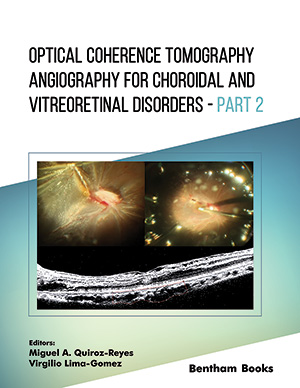摘要
背景:阿尔茨海默病是世界上最常见的神经退行性疾病,以神经元结构和功能的进行性丧失为特征,其主要组织病理学标志是脑内β-淀粉样蛋白的积累。 目的:众所周知,运动是一种神经保护因素,肌肉产生和释放肌肉因子,在炎症和代谢功能障碍中发挥内分泌作用。因此,本研究旨在通过长期HIIT训练与注射β淀粉样蛋白1-42引起的阿尔茨海默氏症模型认知损伤建立运动益处之间的关系。 方法:为此,48只雄性Wistar大鼠被分为四组:久坐假组(SS)、训练假组(ST)、久坐阿兹海默症组(AS)和训练阿兹海默症组(AT)。动物接受立体定向手术,并接受a β1-42或生理盐水的海马注射。术后7天,12天的跑步机适应,随后进行5次最大跑步测试(MRT)和55天的HIIT,大鼠进行莫里斯水迷宫测试。然后对动物实施安乐死,提取腓肠肌组织,通过qRT-PCR分析Fibronectin type III domain containing 5 (FNDC5)、PPARG Coactivator 1 Alpha (PPARGC1A)和Integrin subunit beta 5 (ITGB5-R)的表达以及横截面积。 结果:HIIT可防止淀粉样蛋白β1-42输入引起的认知缺陷(p < 0.0001),引起肌纤维的适应(p < 0.0001),调节FNDC5 (p < 0.01)、ITGB5 (p < 0.01)和PPARGC1A (p < 0.01)的基因表达,并诱导FNDC5外周蛋白表达的增加(p < 0.005)。 结论:因此,我们得出结论,HIIT可以预防Aβ1-42输注引起的认知损伤,构成一种调节重要遗传和蛋白质途径的非药物工具。
关键词: 阿尔茨海默病,鸢尾素,运动,HIIT, Aβ1-42, FNDC5, PPARGC1A。
[http://dx.doi.org/10.3233/JAD-161088] [PMID: 28059794]
[http://dx.doi.org/10.1016/j.arr.2020.101108] [PMID: 32561386]
[http://dx.doi.org/10.3390/genes10090720] [PMID: 31533339]
[http://dx.doi.org/10.3390/ijms22084052] [PMID: 33919972]
[http://dx.doi.org/10.3390/molecules23123229] [PMID: 30544500]
[http://dx.doi.org/10.1249/MSS.0000000000001936] [PMID: 31095081]
[http://dx.doi.org/10.1016/j.biochi.2019.01.001] [PMID: 30611879]
[http://dx.doi.org/10.1002/dvdy.10099]
[http://dx.doi.org/10.1371/journal.pone.0028290] [PMID: 22174785]
[http://dx.doi.org/10.1016/j.cell.2018.10.025]
[http://dx.doi.org/10.1016/j.cell.2015.07.012] [PMID: 26234155]
[http://dx.doi.org/10.1016/j.freeradbiomed.2014.06.013] [PMID: 24960578]
[http://dx.doi.org/10.1016/j.pbb.2012.08.015] [PMID: 22971592]
[http://dx.doi.org/10.1016/j.brainres.2009.05.035] [PMID: 19464276]
[http://dx.doi.org/10.1016/j.bbadis.2014.04.012]
[http://dx.doi.org/10.1371/journal.pone.0170547]
[http://dx.doi.org/10.1590/S1413-35552006000200011]
[http://dx.doi.org/10.2460/ajvr.68.6.583]
[http://dx.doi.org/10.1101/lm.2283011] [PMID: 21878528]
[http://dx.doi.org/10.1038/s41591-018-0275-4] [PMID: 30617325]
[PMID: 17002218]
[http://dx.doi.org/10.4161/adip.26082] [PMID: 24052909]
[http://dx.doi.org/10.1096/fj.12-225755] [PMID: 23362117]
[http://dx.doi.org/10.3390/ijms22062897] [PMID: 33809300]
[http://dx.doi.org/10.1007/s40279-015-0321-z] [PMID: 25771785]
[http://dx.doi.org/10.1530/EJE-14-0204]
[http://dx.doi.org/10.1155/2017/1039161] [PMID: 28386566]
[http://dx.doi.org/10.1371/journal.pone.0121367] [PMID: 25781950]
[http://dx.doi.org/10.1620/tjem.244.93] [PMID: 29415899]
[http://dx.doi.org/10.3390/ijerph18052476] [PMID: 33802329]
[PMID: 26957272]
[http://dx.doi.org/10.1016/j.bbi.2011.02.010] [PMID: 21354469]
[http://dx.doi.org/10.1210/en.2006-1646] [PMID: 17446185]
[http://dx.doi.org/10.2174/1567205018666210218161856] [PMID: 33602092]
[http://dx.doi.org/10.1186/s13578-020-00413-3] [PMID: 32257109]
[http://dx.doi.org/10.1172/JCI27794] [PMID: 16511594]
[http://dx.doi.org/10.1152/advan.00052.2006] [PMID: 17108241]
[http://dx.doi.org/10.1016/j.cmet.2013.03.016] [PMID: 23663737]
[http://dx.doi.org/10.1007/s11064-014-1377-0] [PMID: 25007880]
[http://dx.doi.org/10.1073/pnas.1032913100] [PMID: 12832613]
[http://dx.doi.org/10.1056/NEJMoa031314] [PMID: 14960743]
[http://dx.doi.org/10.1038/ng1180] [PMID: 12808457]
[http://dx.doi.org/10.2337/diabetes.52.3.895] [PMID: 12606537]
[http://dx.doi.org/10.1007/s00125-002-0803-z] [PMID: 12107756]
[http://dx.doi.org/10.1096/fj.02-0367com] [PMID: 12468452]
[http://dx.doi.org/10.1073/pnas.061035098] [PMID: 11274399]
[http://dx.doi.org/10.3233/JAD-2006-9102] [PMID: 16627931]
[http://dx.doi.org/10.3233/JAD-2005-7107] [PMID: 15750215]
[http://dx.doi.org/10.2337/dc12-0922] [PMID: 23069842]
[http://dx.doi.org/10.1056/NEJMoa1215740] [PMID: 23924004]
[http://dx.doi.org/10.1212/WNL.0b013e31826846de] [PMID: 22946113]
[http://dx.doi.org/10.1016/j.neuron.2008.04.014] [PMID: 18549783]
[http://dx.doi.org/10.3390/jcm7110407] [PMID: 30388754]
[http://dx.doi.org/10.1016/S1097-2765(03)00138-2] [PMID: 12769841]
[http://dx.doi.org/10.1016/B978-0-12-378630-2.00447-3]
[http://dx.doi.org/10.1007/s41048-019-0086-2]
[http://dx.doi.org/10.1038/nm0102-27] [PMID: 11786903]
[http://dx.doi.org/10.1016/j.neuron.2014.12.068] [PMID: 25619654]
[http://dx.doi.org/10.1016/S0306-4522(02)00132-X] [PMID: 12088742]
[http://dx.doi.org/10.1186/s12882-016-0343-2] [PMID: 27613243]





























